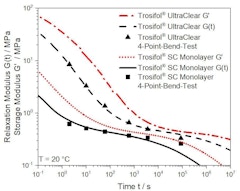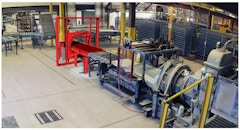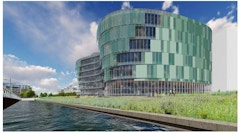
63 results
-
 3.5 billion years ago, cyanobacteria created the foundation for life on Earth by producing the oxygen basis for our atmosphere. Should we once again…
3.5 billion years ago, cyanobacteria created the foundation for life on Earth by producing the oxygen basis for our atmosphere. Should we once again… -

Mixed Reality in Facade Education
- Paper by Phillip Anzalone AIA · Amber Bartosh, RA LEED AP BD+C
Developments in performative computational analysis, mass customization, and complex form manipulation revolutionized building envelope design
-
Localized Rigidification of PCM Envelopes
- Paper by Elnaz Tafrihi
This is an experimental and computational exploration of structural systems that transform between states of rigidity and flexibility. The goal is to
-

Novel Techniques for Facade Optimization
- Paper by Viktoria Henriksson,
Complex freeform architectural enclosures are becoming increasingly popular and easy to model and design with the help of modern computational tools.… -
Dynamic Shading Device
- Paper by Gabriel de Bem, Professor Eduardo Krüger, Professor Alexandre Augusto Alberto Moreira de Abreu, Professor
Responsive shading systems can dynamically improve indoor environmental conditions based on outdoor climate variations. Among the technologies,… -
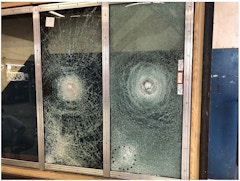
Hurricane-acoustic Glazing Barriers Using New Interlayer Technology
- Paper by Stephen J Bennison, B.Sc., M.S., Ph.D. · Alejandro G Gonzalez · Charles Anthony Smith · Rebecca L Smith · Takuya Kobayashi · Toshiyuki Iguchi
In the last twenty years we have seen the development of polymer interlayers for laminated glass where the resin compositions have been optimized for
-
Determination of Interlayer Structural Properties for Use in Laminated Glass Design
- Paper by Michael Härth, Dipl.-Ing. (FH), M.Sc., Dr.-Ing. · Stephen J Bennison, B.Sc., M.S., Ph.D. · Steven R Sauerbrunn, B.Sc., Ph.D.
We have seen rapid expansion in the last decade of laminated glass design using modern analytical and computational methods. Essential to the proper
-
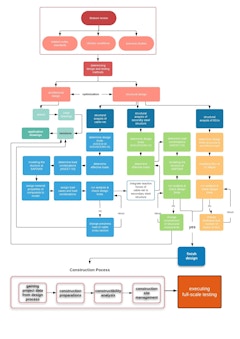
From Design to Experiment
- Paper by E. Yagdir CELIKER, MSc. · Oguz C. CELIK, PhD.
Flat cable-net facades are form-active structures which provide maximum transparency by means of point fixing components, tensioned cables, and
-
Data-Driven Shading Systems
- Paper by Simon Schleicher · Luis Santos · Luisa Caldas
Analyzing the energy performance of complex building envelopes, determining the need for sun protection, and assessing the effectiveness of shading
-
Architectural Ceramic Assemblies
- Paper by Omar Khan · Bill Pottle · Mitchell Bring
This paper documents a six year academia/industry collaboration between researchers at the Department of Architecture, University at Buffalo (SUNY)
-
DC Water Headquarters Case Study
- Paper by Sven Shockey · Leland Curtis · David Fersh
Facades must be responsive to a myriad of qualities and influences ranging from urban impact and aesthetic character to numerous performance
-

Parametric Facade Design
- Paper by Patricia E. Camporeale, María del Pilar Mercader Moyano,
Parametric Design has become an invaluable tool for complex tasks like designing energy efficient buildings when joined to performance-based… -

Fire Safety Facade Design
- Paper by Rigone Paolo, Mazzucchelli Enrico Sergio, De la Fuente Ceja Blanca Judith,
Nowadays the construction industry is characterised by high multifunctional and complex buildings with innovative facade systems. Unlike a simple… -

Lightweight Veneer in High-rise Unitized Facades
- Paper by Michael Chen, P.E. · Antonio Luz, R.A.
Manufactured veneer panels such as glass fiber reinforced concrete (GFRC), ultra high performance concrete (UHPC), sintered stone, and terracotta are
-
Sustainable simplicity and the future of exterior wall for research and education buildings
- Paper by Carl Knutson · Andrei Koshelev
Today, there is a shift towards sustainable simplicity in facades, embracing material innovations and thermal design strategies for long-term
-
Unitized Cavity Wall Design and Implementation
- Paper by Dan Bettenhausen, Ph.D., Director of Mechanical Engineering
Double Skin Facades (DSF), constructed from individual aluminum framed curtain wall assemblies, provide a means of achieving acoustic and thermal… -

Realizing Bespoke Structural Glass Facades
- Paper by Ned Kirschbaum, FAIA, CCCA, LEED AP, kirschbaum@fentressarchitects.com Peter Koukos, Director of Strategic Process Alfonso Lopez, P.E., Principal and CEO
In the very earliest stages of a design, an architect imagines a unique glazed facade form and wonders, “Is this possible?” and “What will it cost?”… -

Climate-Oriented Prefabricated Building Envelopes
- Paper by Sridharan Gandhi, Andrew Tsay Jacobs, AIA, EIT, LEED AP BD+C, Karen Kensek, Assoc. AIA, LEED AP BD+C,
Facades developed in response to climactic factors increase performance and human comfort while reducing energy loads. A single building envelope… -

Performance-based Facade Framework
- Paper by Mahsa Minaei · Ajla Aksamija
Buildings have a considerable impact on the environment, and it is crucial to consider environmental and energy performance in building design.
-

Verifying Thermal Performance
- Paper by Matthew Herman, Mark Walsh,
Architects specify curtain wall thermal performance criteria and usually identify simple modeling software, like THERM, to perform thermal analysis…

